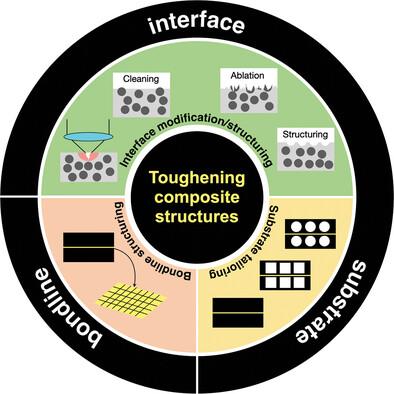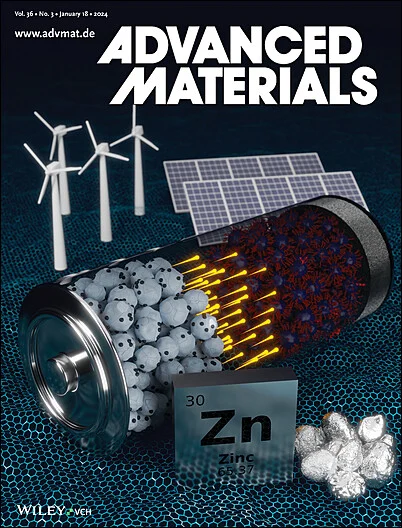Harnessing Extrinsic Dissipation to Enhance the Toughness of Composites and Composite Joints: A State-of-the-Art Review of Recent Advances
IF 27.4
1区 材料科学
Q1 CHEMISTRY, MULTIDISCIPLINARY
引用次数: 0
Abstract
Interfaces play a critical role in modern structures, where integrating multiple materials and components is essential to achieve specific functions. Enhancing the mechanical performance of these interfaces, particularly their resistance to delamination, is essential to enable extremely lightweight designs and improve energy efficiency. Improving toughness (or increasing energy dissipation during delamination) has traditionally involved modifying materials to navigate the well-known strength-toughness trade-off. However, a more effective strategy involves promoting non-local or extrinsic energy dissipation. This approach encompasses complex degradation phenomena that extend beyond the crack tip, such as long-range bridging, crack fragmentation, and ligament formation. This work explores this innovative strategy within the arena of laminated structures, with a particular focus on fiber-reinforced polymers. This review highlights the substantial potential for improvement by presenting various strategies, from basic principles to proof-of-concept applications. This approach represents a significant design direction for integrating materials and structures, especially relevant in the emerging era of additive manufacturing. However, it also comes with new challenges in predictive modeling of such mechanisms at the structural scale, and here the latest development in this direction is highlighted. Through this perspective, greater durability and performance in advanced structural applications can be achieved.

利用外部耗散增强复合材料和复合材料接头的韧性:最新进展综述
界面在现代结构中起着至关重要的作用,将多种材料和部件集成在一起对于实现特定功能至关重要。提高这些界面的机械性能,尤其是抗分层能力,对于实现超轻设计和提高能效至关重要。传统上,提高韧性(或增加分层时的能量消耗)需要对材料进行改性,以解决众所周知的强度-韧性权衡问题。然而,更有效的策略是促进非局部或外部能量耗散。这种方法包括超出裂纹尖端的复杂降解现象,如长程桥接、裂纹破碎和韧带形成。本研究在层状结构领域探讨了这一创新策略,尤其侧重于纤维增强聚合物。本综述通过介绍从基本原理到概念验证应用的各种策略,强调了改进的巨大潜力。这种方法代表了整合材料和结构的重要设计方向,尤其是在新兴的增材制造时代。然而,它也带来了在结构尺度上对此类机理进行预测建模的新挑战,本文重点介绍了这一方向的最新进展。通过这一视角,先进的结构应用可以实现更高的耐用性和性能。
本文章由计算机程序翻译,如有差异,请以英文原文为准。
求助全文
约1分钟内获得全文
求助全文
来源期刊

Advanced Materials
工程技术-材料科学:综合
CiteScore
43.00
自引率
4.10%
发文量
2182
审稿时长
2 months
期刊介绍:
Advanced Materials, one of the world's most prestigious journals and the foundation of the Advanced portfolio, is the home of choice for best-in-class materials science for more than 30 years. Following this fast-growing and interdisciplinary field, we are considering and publishing the most important discoveries on any and all materials from materials scientists, chemists, physicists, engineers as well as health and life scientists and bringing you the latest results and trends in modern materials-related research every week.
 求助内容:
求助内容: 应助结果提醒方式:
应助结果提醒方式:


